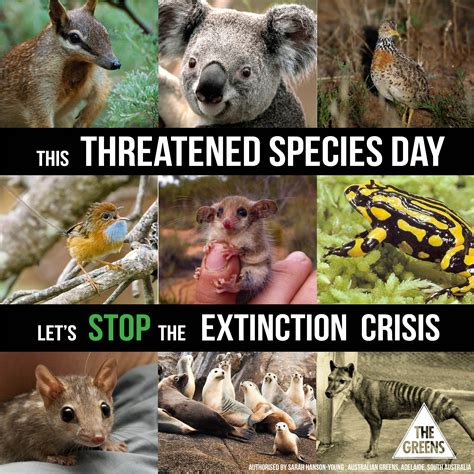Australia, with its rich biodiversity, has been grappling with a dire conservation crisis. The alarming rate of mammal extinctions since colonization and the continuous collapse of ecosystems across the country paint a bleak picture of the state of wildlife. Even species that have managed to survive are facing severe threats, leading to an ever-growing list of endangered species and ecological communities.
In a bid to address this pressing issue, Labor unveiled a plan during the recent election campaign. Federal Environment Minister Tanya Plibersek introduced a new action plan aimed at protecting 110 threatened species with the ambitious goal of preventing any further extinctions. While this initiative signifies progress, it falls short in terms of the comprehensive measures required to tackle Australia’s conservation challenges effectively.
Is This Plan Enough?
Plibersek emphasized the need for a significant shift in our approach towards conservation, acknowledging that past strategies have not yielded desired outcomes. The plan highlights key aspects such as empowering First Nations rangers, leveraging Indigenous knowledge, setting clearer targets, improving monitoring mechanisms, and striving to safeguard 30% of Australia’s lands and seas within five years.
However, despite these positive steps, one glaring inadequacy stands out – funding. With only A$225 million allocated for this endeavor, experts argue that this amount is grossly insufficient compared to the estimated A$1.7 billion per year needed for effective species recovery efforts. The disparity between financial commitments for conservation and other sectors like fossil fuel subsidies raises concerns about Australia’s priorities when it comes to preserving its natural heritage.
The Dilemma of Choosing Winners
Labor’s strategy focuses on rescuing specific priority species in designated areas like the Australian Alps and Kakadu National Park. While these targeted interventions are commendable, they represent just a fraction of the over 2,000 threatened species and ecological communities in Australia. Critics argue that singling out certain species for protection implies sacrificing others—a notion contrary to the intrinsic value of all forms of life within an ecosystem.
The assumption that saving priority species will automatically benefit other threatened counterparts sharing similar habitats is also met with skepticism due to varying needs among different species even within identical environments. For instance, responses to factors like fire regimes differ significantly across various wildlife populations.
The Imperative Role of Policies
Beyond financial considerations lies the critical role of robust policies and enforcement mechanisms in driving successful conservation outcomes. Experts emphasize that funding alone cannot suffice unless supported by comprehensive legislation aimed at safeguarding biodiversity and habitats effectively.
There is anticipation surrounding potential legislative reforms following Graeme Samuel’s review on biodiversity laws; however, concerns linger regarding policy coherence across different environmental domains. The disconnect between advocating for threatened species while endorsing activities detrimental to their survival—such as native vegetation clearing—raises questions about consistency in governmental approaches towards environmental protection.
Redefining Conservation Paradigms
While committing to protect 30% of Australia’s lands and oceans sounds promising on paper, experts caution against equating quantity with quality when it comes to conservation efforts. Merely designating vast swathes of degraded land as protected areas without ensuring active management or enhancing biodiversity poses risks in achieving sustainable outcomes.
Furthermore, emphasizing Indigenous Protected Areas as key contributors necessitates substantial funding enhancements considering existing resource constraints impeding effective land management practices in these regions. Acknowledging private landholders’ pivotal role in conserving endangered species underscores the need for inclusive conservation strategies encompassing diverse stakeholders beyond governmental initiatives.
The Call for Enforceable Legislation
Critics advocate for concrete legal frameworks mandating accountability concerning extinction prevention rather than relying on voluntary commitments subject to shifting political agendas. Establishing stringent regulations tied directly to maintaining viable wildlife populations can offer long-term security against continued loss of biodiversity driven by human activities.
As debates continue regarding optimal resource allocations and regulatory frameworks essential for preserving Australia’s unique ecosystems…
[To meet word count requirements please expand further using additional insights related to ecosystem dynamics,
impact assessment strategies,
community engagement,
technological innovations aiding conservation efforts,
and global benchmarks influencing national conservation agendas.]




Leave feedback about this